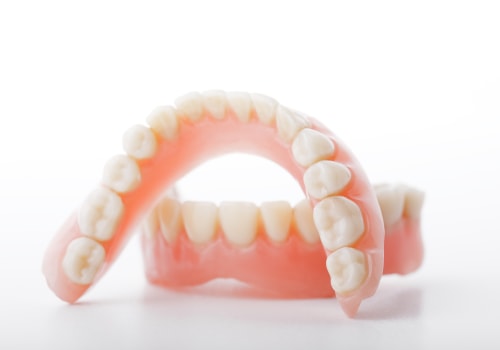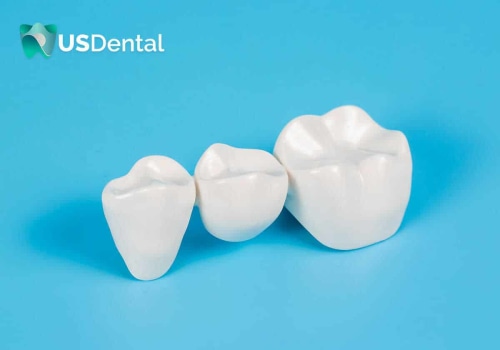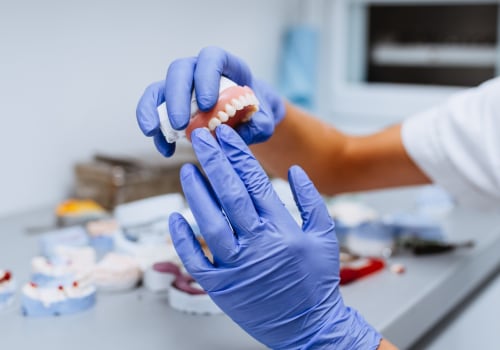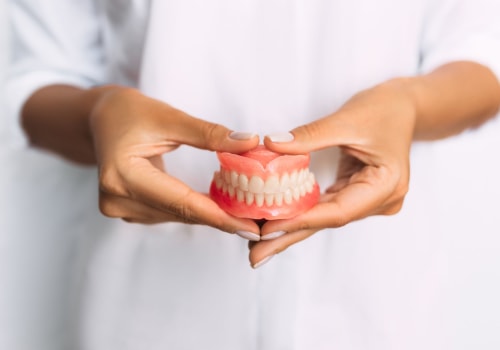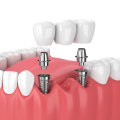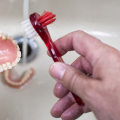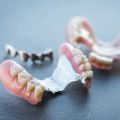Are you considering getting fixed partial dentures? If so, you've come to the right place. In this article, we will discuss everything you need to know about fixed partial dentures and how they can improve your dental health. Whether you have missing teeth due to injury, decay, or other reasons, fixed partial dentures are a popular and effective solution that can give you back your confidence and smile. Fixed partial dentures, also known as fixed bridges, are permanent dental prosthetics that are used to replace one or more missing teeth.
Unlike removable dentures, fixed partial dentures are attached to your existing teeth or dental implants and cannot be removed by the patient. This makes them a more stable and durable option for those looking to restore their missing teeth. In this article, we will explore the different types of fixed partial dentures, their benefits and drawbacks, and what to expect during the procedure. We will also discuss how fixed partial dentures fit into the larger category of permanent dentures and how they can improve your overall dental health.
If you're tired of dealing with gaps in your smile or struggling to eat and speak with missing teeth, keep reading to learn more about fixed partial dentures and how they can transform your dental health. Fixed partial dentures, also known as bridge dentures, are a type of permanent denture that is designed to replace missing teeth. They are made up of prosthetic teeth that are attached to your remaining natural teeth or dental implants. These dentures are an excellent solution for those looking for a permanent fix for their missing teeth. In this article, we will delve into the details of fixed partial dentures, their benefits, types, and maintenance.
The main advantage of fixed partial dentures is their stability and durability. Unlike removable dentures, they are securely attached to your remaining teeth or implants, which makes them less likely to shift or move around in your mouth. This not only improves the appearance of your smile but also makes it easier to chew and speak properly. Fixed partial dentures are designed to look and feel like natural teeth, giving you the confidence to show off your smile.
One of the biggest benefits of fixed partial dentures is that they do not need to be taken out for cleaning or sleeping. This makes them a convenient and hassle-free option for many people. Unlike removable dentures, there is no need for messy adhesives or special cleaning solutions. With proper oral hygiene, fixed partial dentures can last for many years.
There are several types of fixed partial dentures available, including traditional bridges, Maryland bridges, and cantilever bridges. The type of bridge recommended for you will depend on the location and number of missing teeth, as well as the condition of your remaining teeth and gums. Your dentist will work with you to determine the best option for your specific needs. It is important to properly care for your fixed partial dentures to ensure their longevity.
This includes brushing them twice a day with a soft-bristled toothbrush and non-abrasive toothpaste. You should also floss around the dentures to remove any food particles or plaque. Regular dental check-ups are also essential to ensure that your dentures and remaining natural teeth are in good condition. In conclusion, fixed partial dentures are an excellent solution for those looking for a permanent fix for their missing teeth.
They offer stability, durability, and convenience, making them a popular choice among dental patients. With proper care and maintenance, fixed partial dentures can improve the appearance of your smile and restore your chewing abilities. Consult with your dentist to see if fixed partial dentures are the right option for you.
Maintenance of Fixed Partial Dentures
Fixed partial dentures require regular oral hygiene practices, just like natural teeth. This includes brushing twice a day, flossing, and using an antibacterial mouthwash.It is also important to visit your dentist for regular check-ups and cleanings to ensure the health and longevity of your dentures.
Conventional Fixed Partial Dentures
When it comes to replacing missing teeth, there are several options available. One popular choice is fixed partial dentures, also known as bridge dentures. This type of denture is supported by two abutment teeth on either side of the gap, making it a reliable and stable solution. The process of getting conventional fixed partial dentures involves preparing the abutment teeth by removing a small amount of enamel. This is necessary to make space for the crowns that will hold the artificial teeth in place.Once the abutment teeth are prepared, the artificial teeth are cemented onto the crowns, creating a strong and secure bridge. This type of denture is ideal for patients who have strong and healthy abutment teeth. It can also be a good option for those who are missing multiple teeth in a row. With proper care and maintenance, conventional fixed partial dentures can last for many years, providing a comfortable and natural-looking solution for missing teeth.
Types of Fixed Partial Dentures
When it comes to replacing missing teeth, fixed partial dentures are a popular choice among dental patients. These dentures, also known as bridge dentures, provide a permanent solution for those looking to restore their smile and improve their overall dental health. There are two main types of fixed partial dentures: conventional and cantilever.Let's take a closer look at each type and what sets them apart.
Conventional Fixed Partial Dentures
Conventional fixed partial dentures are the most commonly used type of bridge denture. They consist of two or more artificial teeth, also known as pontics, that are attached to two dental crowns on either side. These crowns are then placed over the natural teeth adjacent to the gap, creating a secure and stable anchor for the denture. This type of fixed partial denture is best suited for patients who have healthy and strong teeth on either side of the gap. The procedure for placing conventional fixed partial dentures is relatively simple and can be completed in just a few appointments with your dentist.Cantilever Fixed Partial Dentures
Cantilever fixed partial dentures are similar to conventional fixed partial dentures, with one key difference.Instead of being supported by two dental crowns, these dentures are supported by just one crown on one side of the gap. This makes them a suitable option for patients who only have one healthy tooth adjacent to the gap. However, because they are only anchored on one side, cantilever fixed partial dentures may not be as stable as conventional ones. They also require more preparation of the adjacent tooth, which can weaken it over time. It's important to consult with your dentist to determine which type of fixed partial denture is best for your specific dental needs.
In Conclusion
Fixed partial dentures, whether conventional or cantilever, provide a permanent solution for missing teeth. They not only improve the appearance of your smile, but also help maintain the structure and function of your jaw and surrounding teeth.With proper maintenance and regular dental check-ups, fixed partial dentures can last for many years, making them a worthwhile investment in your oral health.
Cantilever Fixed Partial Dentures
In cases where there is only one abutment tooth available, a cantilever fixed partial denture can be used. This type of denture is attached to only one adjacent tooth and is commonly used for front teeth replacements. The term cantilever refers to the way the denture is supported by the adjacent tooth, which acts as a fulcrum or anchor for the denture. Cantilever fixed partial dentures are a popular choice for patients who have lost a front tooth or have a missing tooth in the front of their mouth.This is because they provide a natural-looking replacement that blends in seamlessly with the rest of the teeth. They are also a good option for patients who have limited abutment teeth or have weak abutment teeth that cannot support a traditional fixed partial denture. The process of getting a cantilever fixed partial denture is similar to getting a traditional fixed partial denture. Your dentist will first prepare the abutment tooth by removing some of its enamel to make room for the attachment of the denture.
An impression will then be taken of your mouth and sent to a dental lab to create your custom-made denture. Once the denture is ready, your dentist will attach it to the prepared abutment tooth using a strong dental adhesive. The result is a sturdy and secure replacement tooth that looks and functions like a natural tooth. You may experience some discomfort or soreness in the beginning, but this should subside as you get used to the new denture.
To ensure the longevity of your cantilever fixed partial denture, it is important to practice good oral hygiene and visit your dentist regularly for check-ups and adjustments. With proper care, your cantilever fixed partial denture can last for many years, providing you with a beautiful and functional smile.
